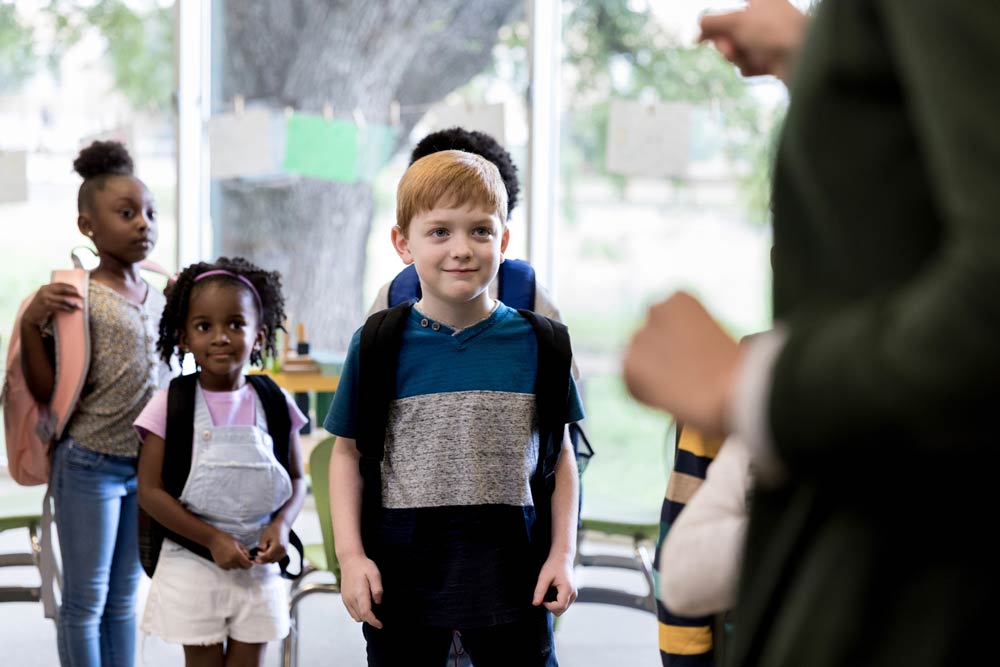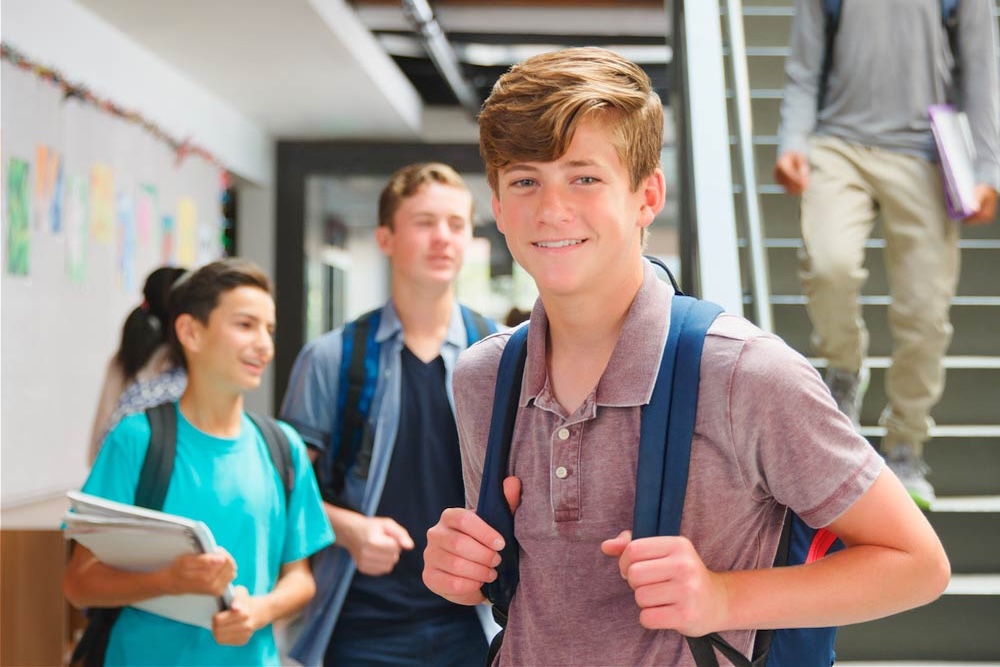Teaching Turn-Taking and Conversation Skills

Discover tips, treatment options, and support strategies from the Finding Focus Care Team

Last Update: July 20th, 2025 | Estimated Read Time: 7 min
For children aged 5 to 12 living with Attention-Deficit/Hyperactivity Disorder (ADHD), navigating the world of social interaction can feel like solving a puzzle without all the pieces. While many kids naturally pick up on unspoken rules of communication, children with ADHD often need explicit guidance and practice, especially when it comes to taking turns and holding conversations.
These foundational skills are more than just polite behaviours, they’re essential building blocks for peer relationships, classroom success, and emotional well-being. When turn-taking and conversational cues are missed, children may experience frequent peer rejection, difficulty forming friendships, and feelings of isolation.
This article explores how ADHD affects social communication in early and middle childhood, why turn-taking and conversational skills matter, and what parents, educators, and clinicians can do to help support children and families.
Why Social Skills Are Challenging for Children with ADHD
ADHD is a neurodevelopmental condition that affects attention regulation, impulse control, and executive functioning. These core symptoms can directly impact how children engage in social situations.
For instance, children with ADHD may:
- Interrupt others or dominate conversations.
- Struggle to notice when others want to speak.
- Jump between topics, making it hard to follow the flow of conversation.
- Miss social cues like body language, tone of voice, or facial expressions.
- React impulsively or with strong emotions during peer interactions.
According to Marton et al. (2009), children with ADHD often experience deficits in pragmatic language, the ability to use language socially in appropriate and effective ways. These deficits can make even simple peer interactions feel frustrating or confusing.
Turn-Taking and Conversation: Why They Matter
Turn-taking and conversational reciprocity are among the first social skills children learn in school settings. These skills form the foundation for collaboration, sharing, problem-solving, and friendship development.
When a child struggles with turn-taking, it can show up as:
- Interrupting during group discussions.
- Grabbing toys without waiting.
- Talking over peers during games or activities.
Likewise, conversational challenges may appear as:
- Monologuing or “info-dumping” without pausing for response.
- Difficulty responding to questions or maintaining topic relevance.
- Failing to recognize when a peer is disinterested or upset.
These interactions can cause peers to withdraw or become frustrated, leading to a cycle where the child with ADHD is excluded or reprimanded. Over time, this pattern can damage a child’s self-esteem and motivation to engage socially (Hoza, 2007).
How to Support Turn-Taking and Conversation Skills
The good news? Social skills can be taught, especially when strategies are concrete, consistent, and matched to the child’s developmental level. Here’s how families, educators, and clinicians can help children build confidence and competence in turn-taking and conversation.
1. Model and Role-Play
Children learn best when they can see and experience what appropriate interaction looks like. Model turn-taking and conversation in daily life.
Example: When talking with your child at dinner, pause intentionally after each sentence and say, “Now it’s your turn.” Reinforce the pattern: speak → pause → listen → respond.
Role-play common scenarios using toys, puppets, or simple scripts. Act out a classroom discussion or a playground exchange, switching roles to let your child practice both speaking and listening.
Research Insight: Training programs that use modelling and role-play significantly improve social competence in children with ADHD, especially when parents are involved in the learning process (Antshel & Remer, 2003).
2. Use Visual Supports and Prompts
Many children with ADHD are visual learners. Use simple visual aids to guide interactions.
- Conversation cue cards: Use cards that show images of “Listening,” “Waiting,” “Asking a Question,” or “Changing Topics.”
- Turn-taking tokens: In group settings, pass a token or ball to signal whose turn it is to speak.
- Social stories: Create short illustrated stories that explain what to do in situations like joining a group, waiting for a turn, or responding to a question.
Tip: Place visuals at eye level in commonly used areas like classrooms, kitchen tables, or therapy rooms to reinforce the strategy regularly.
3. Practice During Play
Play is a natural and effective context for teaching turn-taking. Board games, card games, and pretend play all require children to wait, listen, and respond.
When using games to build skills:
- Narrate turns: “It’s my turn. Now I roll the dice. Okay, your turn!”
- Praise effort: “I saw you waited patiently. That was kind.”
- Keep games short: Use quick-turn games to maintain attention and avoid frustration.
- Address slips calmly: “Oops! You jumped ahead. Let’s back up and try again.”
Play also creates a safe space for kids to make mistakes and try again, without fear of punishment or shame.
4. Teach Emotion Recognition and Empathy
Conversation is not just about words, it’s about connection. Many children with ADHD benefit from explicit teaching on how to read facial expressions, tone, and body language.
Try activities like:
- Looking at photos or cartoons and guessing how each person feels.
- Practicing “empathy guessing” after reading a book: “How do you think the character felt when that happened?”
- Using mirrors to practice showing “happy,” “angry,” “confused,” or “bored” expressions.
These activities build the child’s awareness of how their actions affect others, and how to tune in to social cues.
5. Set Goals and Track Progress
Children respond well to goal-setting, especially when progress is made visible. Use sticker charts, journals, or app-based trackers to celebrate successes like:
- Waiting for a turn during circle time.
- Asking a friend a question during recess.
- Staying on topic for 3 exchanges during a conversation.
Keep goals simple and specific, such as: “I will raise my hand before speaking” or “I will wait my turn when playing a game.”
Goal-setting paired with immediate feedback improved peer interactions and reduced social friction in children with ADHD.
What Families Can Do at Home
Parents play a vital role in reinforcing social skills at home. Here are ways families can support ongoing learning:
- Create routines that include built-in moments of interaction: shared meals, story time, or walk-and-talks.
- Catch good moments and offer praise: “You let your sister finish before you answered, great turn-taking!”
- Limit screen time during key interaction moments. Use screen-free time to practice real conversation.
- Stay patient. Kids with ADHD may need extra reminders and time to learn. Celebrate effort, not just results.
When to Seek Additional Support
If your child continues to struggle with peer relationships, becomes increasingly isolated, or shows signs of emotional distress, it may be time to consult with a professional.
Support options include:
- Social skills groups run by child psychologists or speech-language pathologists.
- School-based interventions like Individual Education Plans (IEPs) or social-emotional learning programs.
- Behavioural therapy to reinforce skills and reduce impulsive reactions.
- Speech and language support to address pragmatic language concerns.
Early intervention leads to better outcomes. You don’t have to wait for things to get worse, support now can build stronger, more confident interactions in the future.
Final Thoughts: Small Steps, Big Progress
Turn-taking and conversation skills might seem small, but they’re monumental for children with ADHD. These abilities open the door to friendships, learning, and a sense of belonging.
With the right tools, consistent practice, and supportive adults, kids can learn to navigate conversations with greater confidence, and even enjoy the back-and-forth rhythm of social connection.
Every child with ADHD has the potential to thrive socially. It just takes guidance, patience, and a few creative strategies to help them get there.
Finding Focus Care Team
We are a group of nurse practitioners, continuous care specialists, creators, and writers, all committed to excellence in patient care and expertise in ADHD. We share content that illuminates aspects of ADHD and broader health care topics. Each article is medically verified and approved by the Finding Focus Care Team. You can contact us at Finding Focus Support if you have any questions!
References
Antshel, K. M., & Remer, R. (2003). Social skills training in children with attention deficit hyperactivity disorder: A randomized-controlled clinical trial. Journal of Clinical Child and Adolescent Psychology, 32(1), 153–165. Link
Hoza, B. (2007). Peer functioning in children with ADHD. Ambulatory Pediatrics, 7(1), 101–106. Link
Marton, I., Wiener, J., Rogers, M., Moore, C., & Tannock, R. (2009). Empathy and social perspective taking in children with attention-deficit/hyperactivity disorder. Journal of Abnormal Child Psychology, 37(1), 107–118. Link





